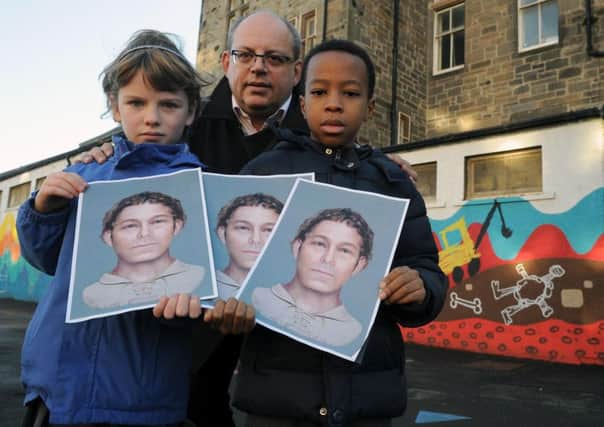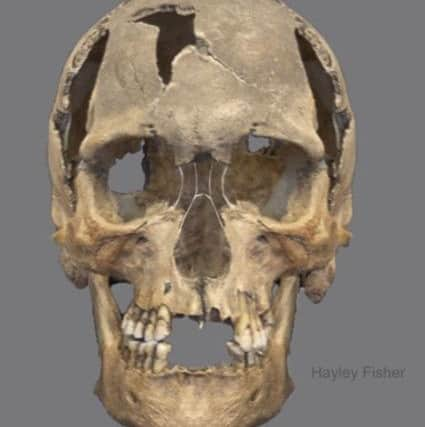Dead Newhaven pirate goes back to school for history lesson


The bones were discovered at Victoria Primary School in Newhaven, near the site of the medieval harbour where pirates were once hanged from a gibbet and displayed in view of ships as a deterrent to others.
They belonged to a man in his 50s, buried in a shallow unmarked grave under what later became the children’s play area.
Advertisement
Hide AdAdvertisement
Hide AdThe skeleton was returned to the school so pupils could examine the bones and receive a lesson in forensics. Headteacher Laura Thomson said: “We are the oldest working primary school in Edinburgh but this discovery shows the pupils that there was so much here before them.


“The Curriculum for Excellence is about learning in a real context and you can’t get any more real than this.
“To be able to study the bones is a great learning opportunity for them. It’s captured their imaginations and brought history alive.”
The skeleton was discovered in January 2014 during survey work ahead of a new school extension. Newhaven was a historic fishing village and workers expected to find remains of the harbour and shipbuilding rather than human bones.
Advertisement
Hide AdAdvertisement
Hide AdArchaeologists originally thought the remains were Bronze Age because of their poor condition and the discovery nearby of 4000-year-old shards of pottery.


But they were recently carbon dated to the 16th or 17th centuries and experts created a facial reconstruction of the man.
The location of the burial close to the sea and gibbet, rather than in one of three graveyards, suggests the man was killed before being displayed to deter other pirates.
Burial in a shallow, unmarked grave suggests he had no relatives or friends in the area. The archaeologists told the children how they used science to analyse the remains.
Advertisement
Hide AdAdvertisement
Hide AdPupils were shown how the victim, buried in a crouching position, would have stood around 5ft 6in.
One of his arms had been broken and healed, while abnormalities in his vertebrae indicate he was used to heavy work. His worn teeth show he had a high grain diet of stone-ground bread.
Ella Jane Somerville, a P5 pupil at Victoria Primary, said: “It was a shock to find our own pirate under the playground.
“I don’t think I’d have liked to have met him when he was a pirate, but I feel sorry for him now because he was hanged.”
Advertisement
Hide AdAdvertisement
Hide AdMartin Cook, of Edinburgh-based AOC Archaeology, who carried out the dig, said: “It’s really important to give something back to the children.
“Their playground was out of action for almost a year. This gives them an opportunity to see what we were doing and a sense of the history around them.”